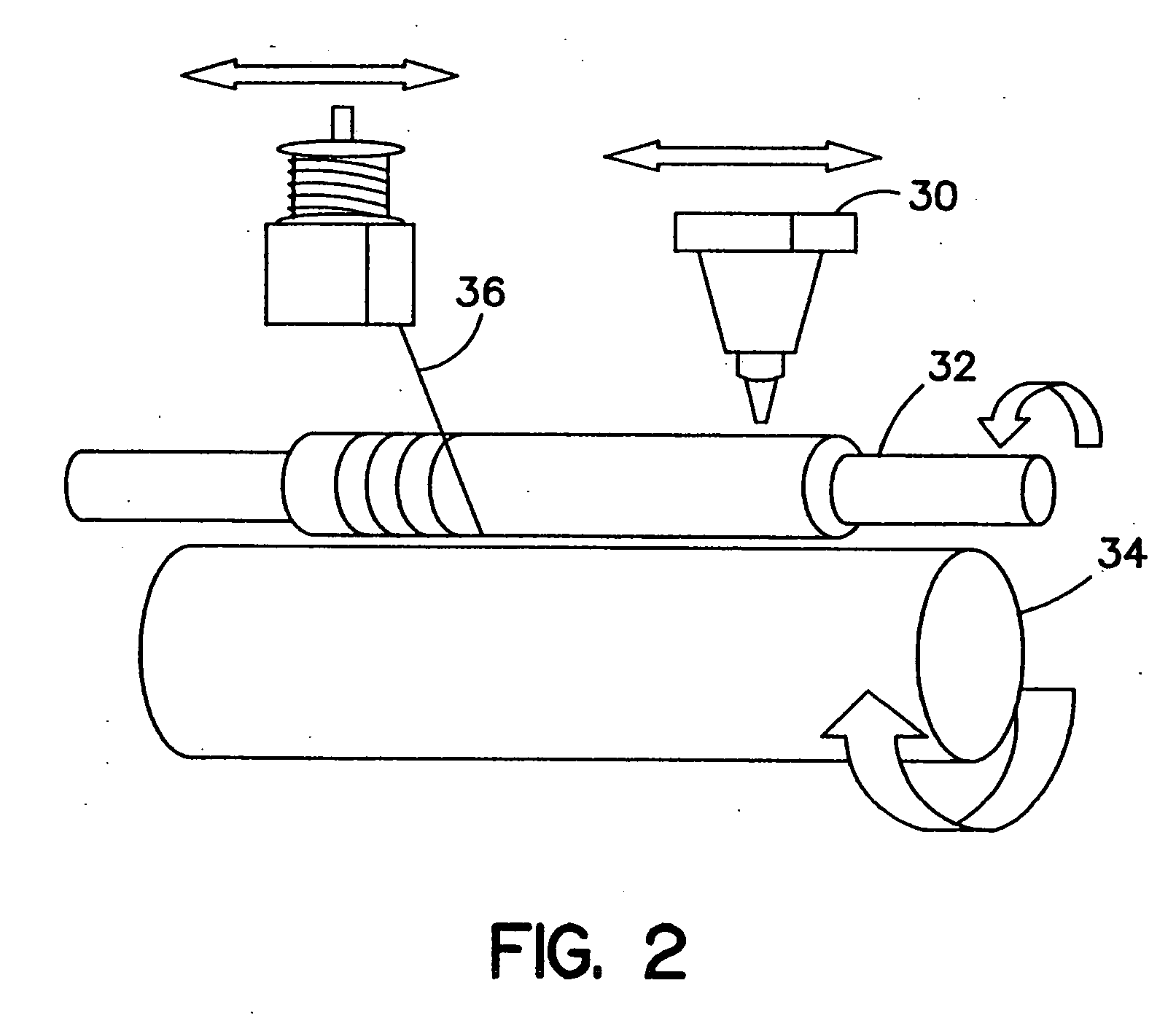Porous synthetic vascular grafts with oriented ingrowth channels
a synthetic vascular graft and ingrowth channel technology, which is applied in the field of vascular prosthesis having oriented channelporosity, can solve the problems of unsatisfactory long-term results, too diseased or unsuitable for use as an implant, and adverse effects of medium-diameter arteries on the structure of the arterial wall,
- Summary
- Abstract
- Description
- Claims
- Application Information
AI Technical Summary
Benefits of technology
Problems solved by technology
Method used
Image
Examples
Embodiment Construction
[0031] This invention is directed to an improved prosthetic vascular graft having a synthetic scaffold of transmural ingrowth channels which are characterized by an interconnected, helical orientation. A process of producing such channels in a synthetic scaffold can be achieved using an extractable fiber. The product and process are explained in detail below.
[0032] In order to promote ingrowth of connective tissue, it is important that mechanical properties' of the graft are closely matched with mechanical properties of a host vessel, thereby overcoming problems of compliance mismatch. Although structure of blood vessels varies through a body, a “typical” artery consists of three distinct layers, each performing specific basic functions. An intima, consisting of an endothelium attached to a basement membrane, provides a non-thrombogenic blood contacting surface. A media contains smooth muscle cells (SMC's) as well as elastic and other intercellular connective and matrix materials, ...
PUM
| Property | Measurement | Unit |
|---|---|---|
| diameter | aaaaa | aaaaa |
| size | aaaaa | aaaaa |
| size | aaaaa | aaaaa |
Abstract
Description
Claims
Application Information
 Login to View More
Login to View More - R&D
- Intellectual Property
- Life Sciences
- Materials
- Tech Scout
- Unparalleled Data Quality
- Higher Quality Content
- 60% Fewer Hallucinations
Browse by: Latest US Patents, China's latest patents, Technical Efficacy Thesaurus, Application Domain, Technology Topic, Popular Technical Reports.
© 2025 PatSnap. All rights reserved.Legal|Privacy policy|Modern Slavery Act Transparency Statement|Sitemap|About US| Contact US: help@patsnap.com



